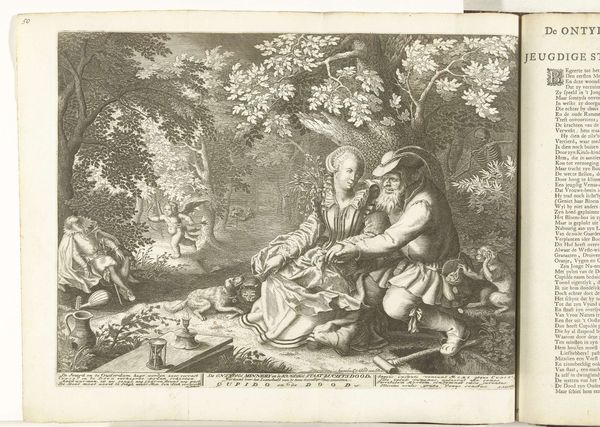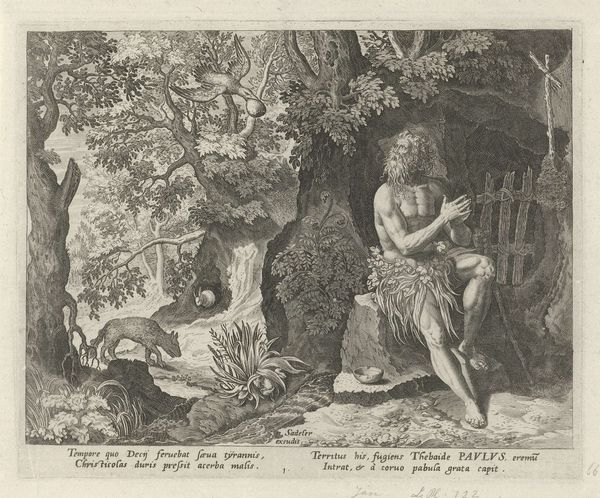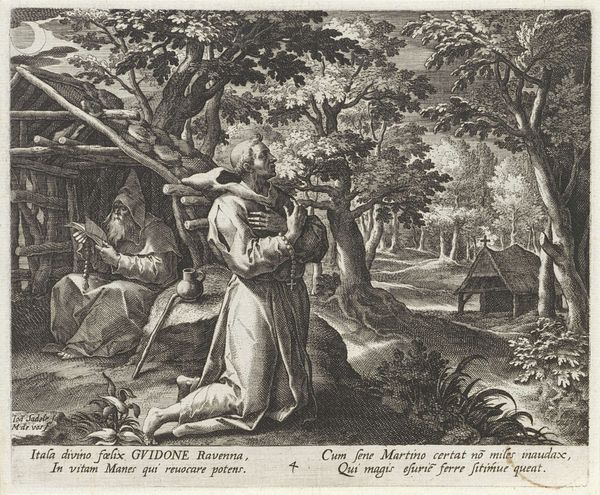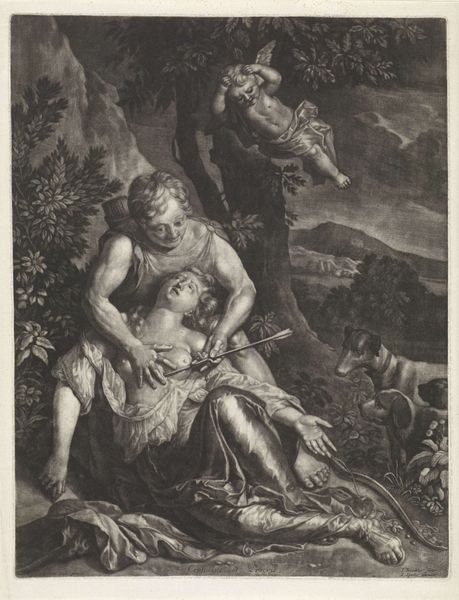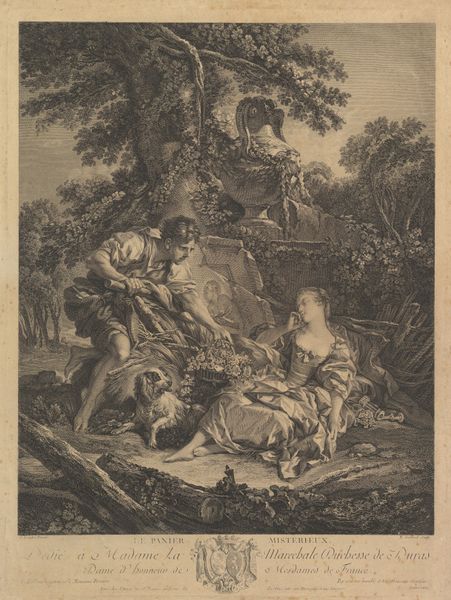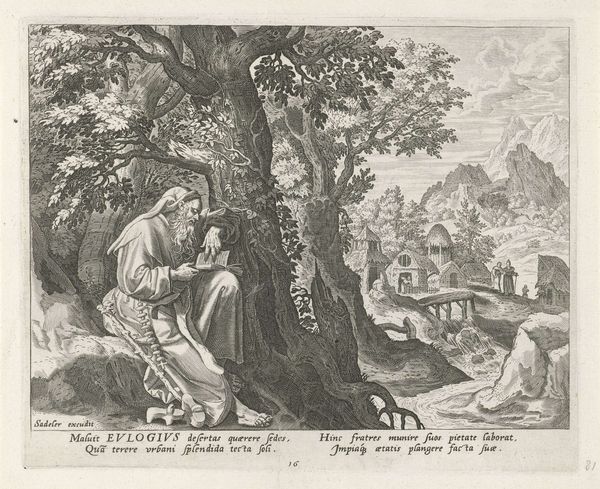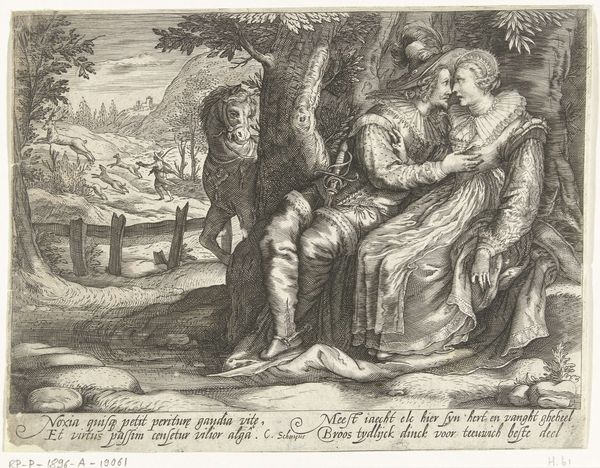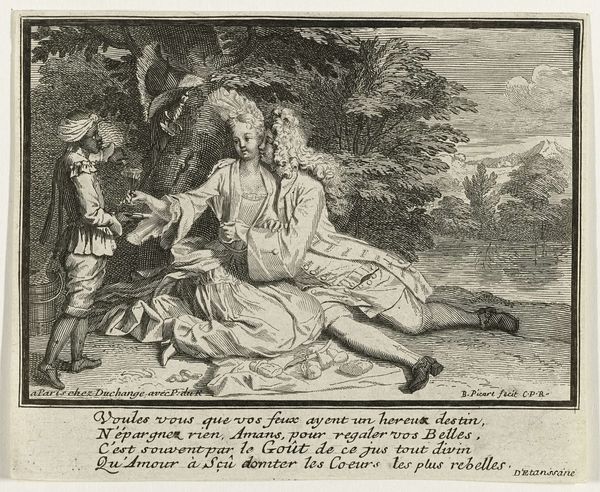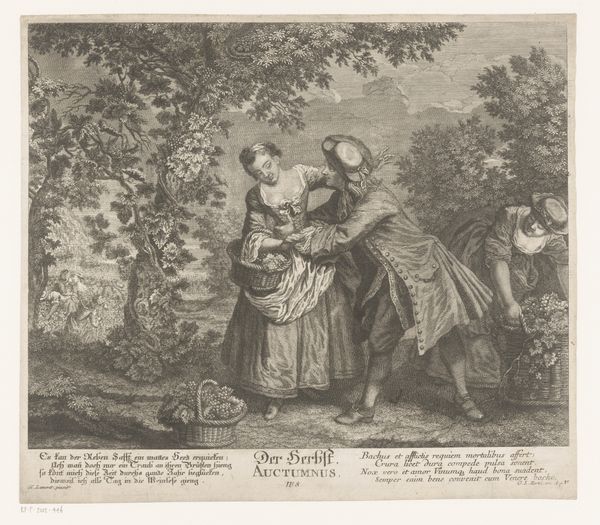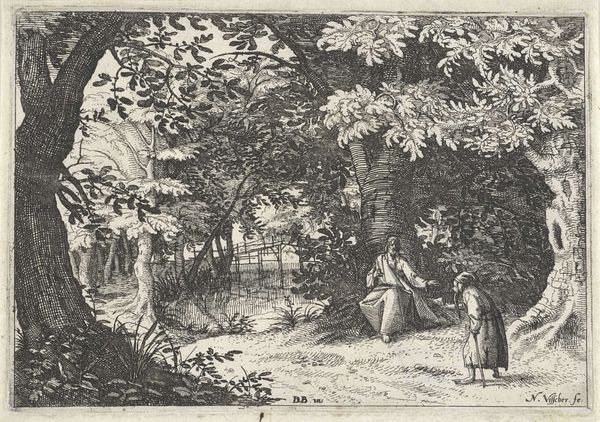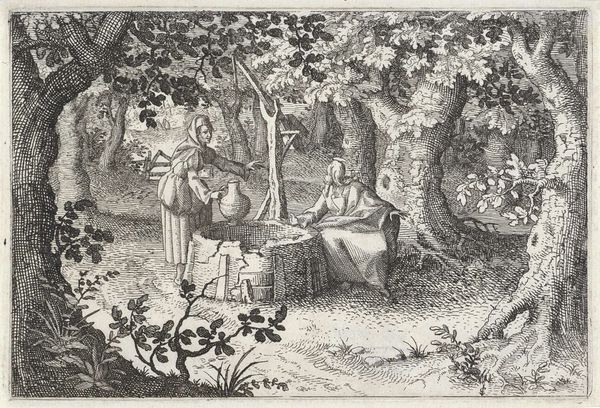
Dood en Cupido schieten elkaars pijlen af en oude man maakt jonge vrouw het hof 1595
0:00
0:00
boetiusadamszbolswert
Rijksmuseum
engraving
#
allegory
#
narrative-art
#
baroque
#
figuration
#
genre-painting
#
northern-renaissance
#
engraving
Dimensions: height 274 mm, width 363 mm
Copyright: Rijks Museum: Open Domain
Curator: Before us is a work titled "Death and Cupid exchanging arrows, and an old man courting a young woman," an engraving made around 1595 by Boëtius Adamsz. Bolswert. Editor: My initial impression is of contrasts: youth and age, light and dark, attraction and… well, dread. The stark values of the engraving lend the scene a slightly unsettling mood despite the seemingly playful subject matter. Curator: Absolutely. Consider the positioning of Death himself, lurking in the background while Cupid mischievously switches arrows. It's an allegory, typical of the Northern Renaissance, where courtship is intertwined with both love and mortality. The piece speaks volumes about societal attitudes toward age, beauty, and the transactional nature of relationships, particularly for women. The young woman's expression seems...resigned, almost. Editor: And structurally, it is interesting how the foreground pulls you in, but the carefully shaded trees in the background act like a theatrical backdrop that adds spatial depth. Bolswert’s use of line, creating form through hatching and cross-hatching, is really skillful. Notice how the lines darken to create depth in the forest. Curator: The detail is remarkable, isn't it? The fine lines create a tapestry of symbolism. A lute rests near the cupid on the left, while on the right we find an ominous skeleton. The text at the bottom actually expands on the images. Consider how social power dynamics play into the composition, especially regarding the relationship between the older man and the younger woman. Editor: Yes, but consider how the diagonal created between the lute on the left and the skull on the right divide the scene, adding structural and, I would say, symbolic complexity. Both serve as counterweights within this composition, establishing an impactful tension. Curator: It prompts us to reflect on who holds power and who is subject to it. The interplay between attraction, resources, and time. What commentary can we apply to the gaze? Who can and can't have power of it? Editor: For me, the overall impact lies in its skillful manipulation of form and tone. It encourages you to unravel those inherent structures and to engage critically with each component. Curator: It serves as a vivid historical artifact of the complexities woven into historical courtship, and an entrypoint for ongoing dialogue within art history and our contemporary moment.
Comments
No comments
Be the first to comment and join the conversation on the ultimate creative platform.
